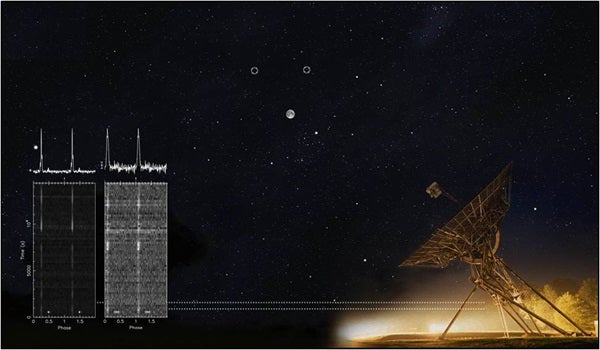“With the new wide-field camera, the WSRT will be more than 30 times faster in surveying the sky,” said Tom Oosterloo, also from ASTRON. “Observations that would take a month with the old WSRT can now be completed in a single day. This increase in observing speed will no doubt lead to many exciting discoveries, not only of pulsars, but also of galaxies, transient sources, and potentially new, as yet undiscovered, cosmic phenomena.”
Many astronomers have recognized the scientific potential of Apertif and are interested in getting their share of the action. Astronomers from around the world will descend on Dwingeloo on November 22 and 23 in order to discuss the full range of scientific opportunities Apertif will enable. “There has been an overwhelming response to our call for expressions of interest in Apertif,” said Rene Vermeulen from ASTRON, “and it is clear that the WSRT-Apertif combination will have an extremely busy calendar.”
“With the new wide-field camera, the WSRT will be more than 30 times faster in surveying the sky,” said Tom Oosterloo, also from ASTRON. “Observations that would take a month with the old WSRT can now be completed in a single day. This increase in observing speed will no doubt lead to many exciting discoveries, not only of pulsars, but also of galaxies, transient sources, and potentially new, as yet undiscovered, cosmic phenomena.”
Many astronomers have recognized the scientific potential of Apertif and are interested in getting their share of the action. Astronomers from around the world will descend on Dwingeloo on November 22 and 23 in order to discuss the full range of scientific opportunities Apertif will enable. “There has been an overwhelming response to our call for expressions of interest in Apertif,” said Rene Vermeulen from ASTRON, “and it is clear that the WSRT-Apertif combination will have an extremely busy calendar.”










